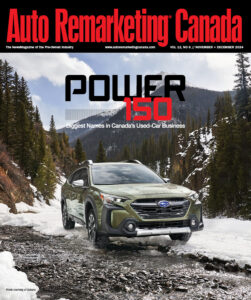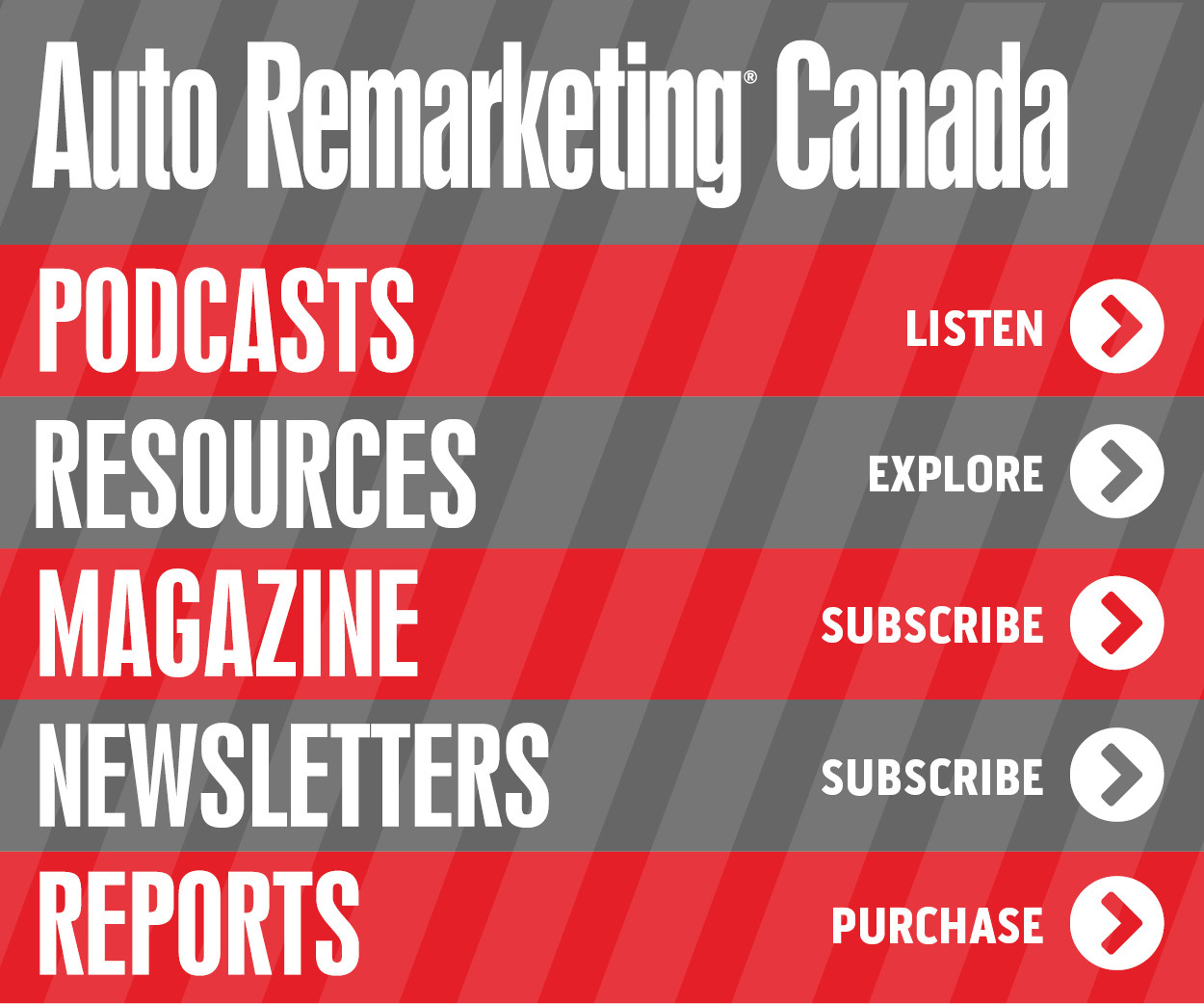Wikibrands managing director on effective engagement strategy with customers

A recognized thought leader in the world of brand leadership, innovation and social influence marketing, Sean Moffitt, managing director of Wikibrands, has been involved with digital marketing for the past 15 years. He co-authored the best-selling book Wikibrands with Mike Dover and helped turn it into a living, breathing customer engagement hub and consultancy.
The Trillium Automobile Dealers Association (TADA) — which also is one of the industry partners for both the Auto Remarketing Canada Conference and the accompanying event, Women & Automotive — is bringing Moffitt to Ontario. In a prelude to his appearance as keynote speaker during TADA’s Auto Dealers Innovation Series on March 22 and 23 in Ottawa and Toronto, the association asked Moffitt about how Wikibrands came about, how businesses can use it effectively as a marketing strategy and thoughts about speaking to an automotive dealer audience.
Here’s what he had to say:
TADA: Can you tell us a little about what Wikibrands actually means from a business perspective?
Sean Moffitt: The literal definition of Wikibrands is from Wiki (which in Hawaiian means quick or to hurry) and brands in what we refer to as the trademark owned by a company. It’s essentially a call to action to make sure that brands, companies and marketers become much more engaged with their customers.
TADA: What are some of the key fundamentals you feel businesses need to understand when it comes to effectively engaging with their customers in today's hyper connected world?
SM: I certainly think that the climate has changed in the last 15 years, certainly if you have worked within the marketing sphere. It has become awash in digital platforms and certainly with social media blowing up 10 years ago—you know that to be an effective marketer today you have to be a little bit more flexible in how you position your brands.
Recognizing cultural change is one thing, but the other side is that there really is a lot of sweat equity involved in terms of being able to do it right and effectively engage with your audience. It’s easy to invent concepts, but it takes a longer period of time, to develop a real conversation and level of engagement.
TADA: With so many different social media and connectivity platforms available, how can a business effectively decide which approach to take —for example is there a danger of trying to do too much and be in too many places at once?
SM: My belief is that as a company, you should, if you can, try to do one or two things really, really well. It can be far more effective than trying to plug all of your fingers in the dam at once. The other part of that question is that becoming too attached to a particular social platform is also a recipe for failure. Through analysis every five years, I’ve looked at the core audience of social media and what their top brands were. Pretty much at every five-year stage of this journey, the top five brands change quite rapidly. The danger of getting married to one social platform is that it can be here one year and gone the next. Experience shows that many social medial platforms are like nightclubs—they tend to have two or three-year cycles.
TADA: Can you share with us a couple of examples of successful Wiki marketing strategies and perhaps how and why they were so effective?
SM: When Mike and I originally wrote the book, we took a pragmatic view and said let’s go to 100 companies we think are doing a really good job and see what they have done. We interviewed across 20 different industries at companies that were different sizes—private, public, not for profit—it didn’t matter who they were—we just wanted to understand what they were doing. We came up with the 12 principles that helped establish the road map to being receptive Wikibrands.
One example that stands out is Dollar Shave Club. This was a venture that was created six years ago principally on the back of really good engagement, really authentic storytelling and mastery of video and video sharing platforms. They got the message out and it was very effective. They took this idea on paper and transformed into millions of dollars in sales. Last July; Dollar Shave Club was purchased by Unilever for $1 billion in cash.
TADA: What are some of the key messages you're looking to broadcast to an automotive retailing audience, since the car business is still a unique model in terms of the emotional and cost factors involved when purchasing a vehicle?
SM: The automotive dealer is probably more important now than they have ever been. In general, retailers have developed a heightened presence in the last 10 years because they own that part of the brand experience. From my perspective, there is a maturity level in the automotive space that is beyond other industries—so my objective is to reach out and to get to that next stage of engagement. Where that’s concerned I think it comes down to three different objectives.
Firstly, as an effective marketing organization at the dealership—what are the key things you need to be doing?
Secondly, how do you get there? My goal is to provide some pragmatic tips on ‘here’s how to do it’— not just in theory but real step-by-step processes you can take back to your office and actually apply.
Thirdly, because things are changes so quickly, I will probably share tidbits of what is going to be happening right around the corner, especially if you want to be the first person within your specific world to take it to the next level and be at the forefront of discussions on everybody’s lips 12 months from now.
TADA: How and what should businesses do to ensure that engagement and sales actually correlate—a lot of the time we've seen successful engagement strategies that have not been properly translated into actual sales?
SM: I would say there are three effective approaches to make it work: One is a bit controversial but always works — essentially the moment you realize a competitor across the street is gaining because of their digital engagement strategy, your CEOs and executives become very interested in it themselves. It’s probably not the best place to start from but it is a very human reaction.
Additionally there are two other, more organic approaches. I call what we’re in today the sixth evolution of digital or the ‘Impact Age.’ We’ve had about 15 years of maturing digital business driven growth and there are enough case studies and in-market success to demonstrate that people who have done this have really put themselves further ahead than people that don’t. I think people that are open to receiving this type of information will open themselves up to this world of digital whether they come from it or not.
The third piece is that the great thing about digital is that you can invent things as you go. Obviously people have great ideas — as much as I can tell you your competitor is doing it or that strategically there is a way for it to work, then it makes sense to do it. The other part is that we can dream and build something big. We can do it together and produce massive amounts of success if it’s done right. At the end of the day it should be part of any business decision. If great digital engagement works for a small cookie cutter company then there’s no reason why it can’t work for your dealership.
For more details about TADA’s upcoming Auto Dealers Innovation Series that will feature presentations from high profile industry leaders that are experts in innovation, go to this website.

 View The Latest Edition
View The Latest Edition

